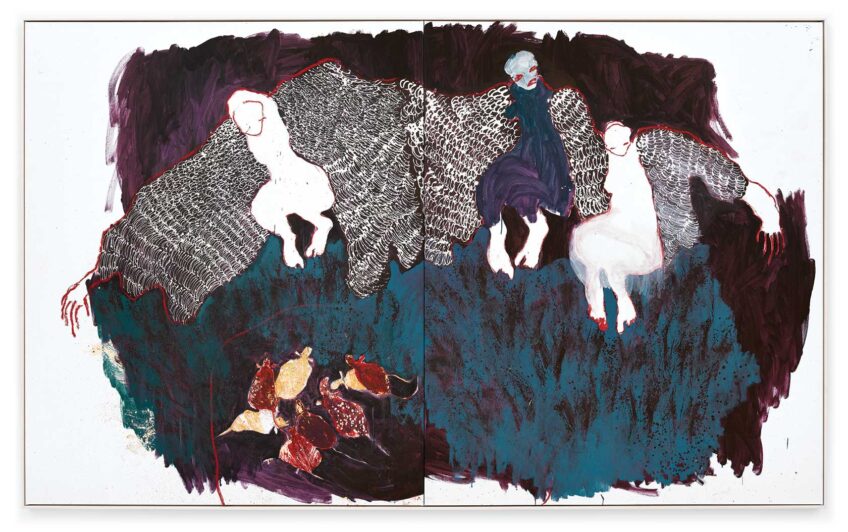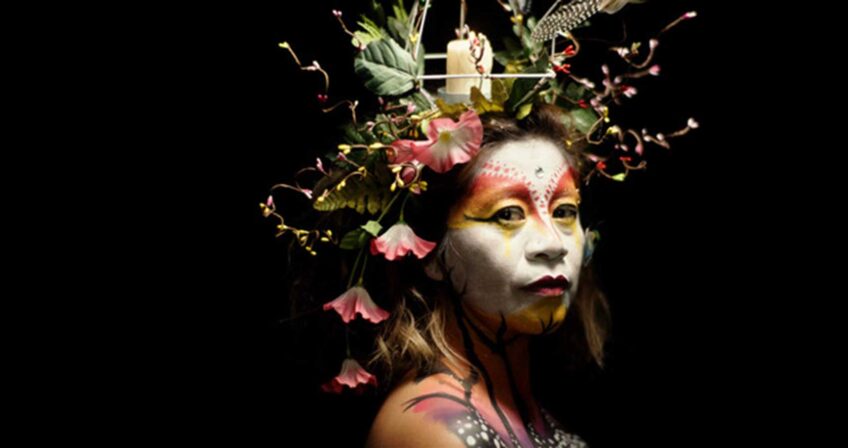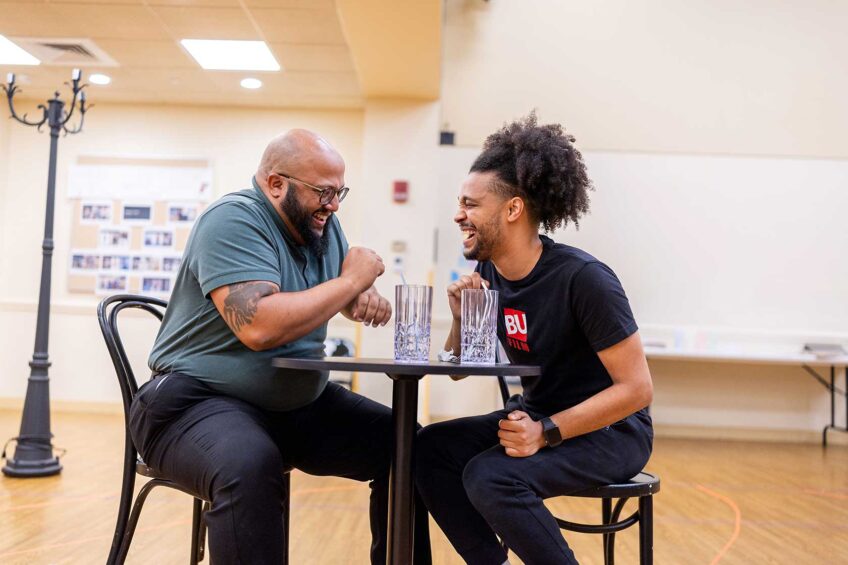Renowned Indigenous artist Jeffrey Gibson installs new mural in Dewey Sq.

Banner Arts & Culture Sponsored by Cruz Companies
There’s a new kid on the artistic block. Last week, world-renowned multidisciplinary artist Jeffrey Gibson installed “your spirit whispering in my ear” in Dewey Square on the Rose Kennedy Greenway. The massive 76-by-70-foot mural fuses Gibson’s signature brightly colored, geometric style with Indigenous imagery to probe the themes of identity, resistance and sociopolitical movements.
At first glance, the mural is a whirl of color — rich red, electric green and deep ocean blues carved into circles and arrows. There are a few floating beaded figures on the wall as well, a black-and-white-striped snake that represents rebirth and transformation, and two faces that represent the spirit world. Among them sit circular buttons with phrases like “Legalize freedom,” “Question reality” and “A woman’s place is in the world.” These buttons are representations of real items the artist has collected during different political movements.
“‘Your spirit whispering in my ear’ are words that I wrote earlier this year as I thought about the challenges that my ancestors and others have endured during their lifetimes, and how they met those difficulties with faith, courage and strength,” says Gibson. “I am not only speaking to my ancestors but also to artists, past and present activists, the planet, the universe and to all living things surrounding us.”
Gibson is a member of the Mississippi Band of Choctaw Indians and of Cherokee descent. His work fuses Native American images with contemporary culture in a unique and joyful way. Gibson represented the United States at the 60th edition of the Venice Biennale this past spring. He was the first Native artist to represent the U.S.
The new work is the 10th edition of the rotating mural series in Dewey Square. Previously, the wall showcased a mural by local artist Rob “Problak” Gibbs, the first local artist to participate in the program. Though no longer on view in person, Gibbs’ mural is preserved in the Greenway’s digital archive. In the archive, there are pictures of the mural and the public programs that occurred around it, printable coloring pages of the mural and feedback from community members about it.
Since its inception, the Dewey Square mural program has focused on bringing fresh voices into downtown Boston and increasing representation at the city’s center.
Audrey Lopez, director and curator of public art at The Rose Kennedy Greenway Conservancy, says, “Just in the way that Rob’s mural centered Black perspectives and took up space in downtown Boston, I was really interested in centering Indigenous voices and queer perspectives in public space in Boston.”
Lopez says the Greenway plans to commission and showcase work by local Native artists in dialogue with the mural in Dewey Square Plaza.
More of Gibson’s work can also be seen in an exhibition opening Nov. 3 at Mass MoCA in North Adams, Massachusetts.
The Greenway will host a free opening party for “your spirit whispering in my ear” in Dewey Square on Sept. 19 at 6 p.m. Attendees will hear directly from the artist and Greenway arts leaders and can enjoy drag performances, Indigenous dance performances, art-making workshops and live music.
“I really see public art as a space where we’re able to uplift and amplify stories that maybe aren’t as dominant in Boston’s public memory or public history,” says Lopez. “It creates spaces where folks feel welcome.”








